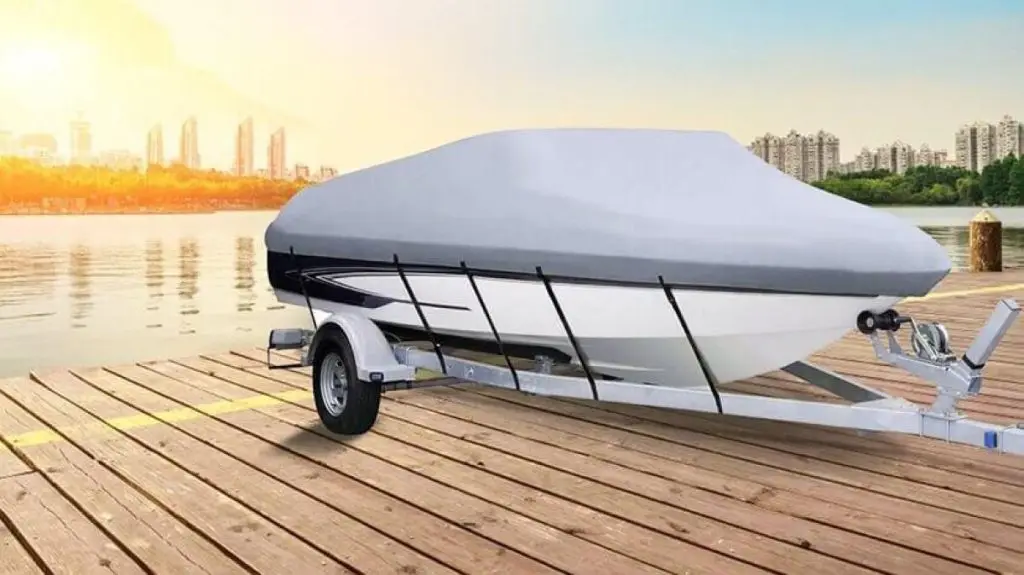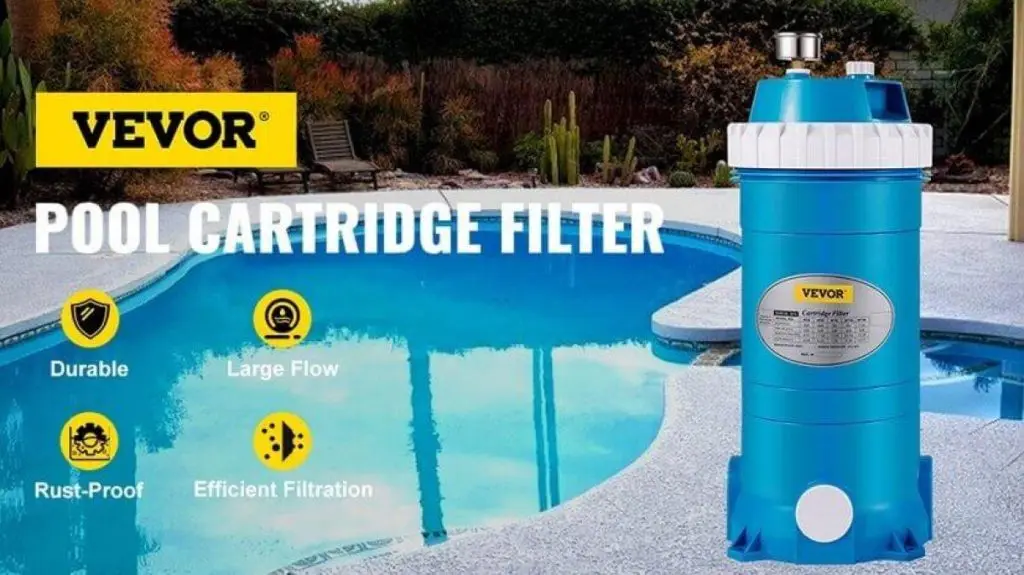Keeping a swimming pool clean and sparkling is a source of pride for most pool owners. However, maintaining pool water clarity requires more than adding chemicals or skimming the surface for visible debris. The pool filter is a crucial component that plays a major role in ensuring healthy and clear pool water.
Different types of pool filters are available in the market, with sand and cartridge filters being the most popular. In this article, we aim to unravel the key considerations surrounding cartridge filters and sand filters to help you make an informed decision in the cartridge filter vs sand filter debate.
Notably, proper filter maintenance is key to effective filtration. Neglecting to clean your pool filter can result in clogged filters, poor filtration, increased energy consumption, and increased chemical use. Therefore, it is essential to understand the importance of regular pool filter maintenance and why cartridge filters might be a perfect fit for you.
What Does a Pool Filter Do?
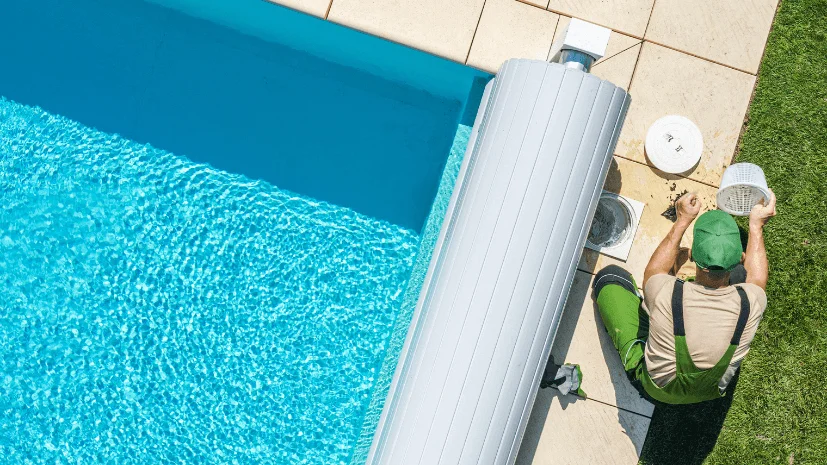
A pool filter is essential to a swimming pool’s circulation system. Its main function is to remove impurities and debris from the water, ensuring the pool remains clean and safe for swimming. Here’s a breakdown of what a pool filter does:
1. Filtration: The primary purpose of a pool filter is to trap and remove particles from the water. As the pool pump circulates water through the filter, it passes through a filtering medium, typically made of sand, diatomaceous earth (DE), or cartridge elements. These materials act as a barrier, capturing contaminants such as dirt, leaves, hair, insects, and even smaller particles like bacteria and algae.
2. Removal of Visible Debris: The filter’s surface catches larger debris, such as leaves or twigs, before entering the pool’s circulation system. This prevents such debris from clogging the pipes or causing damage to the pool equipment.
3. Maintaining Water Clarity: By removing impurities, a pool filter helps to keep the water clear and visually appealing. With filtration, the pool water could become cleaner, making it more inviting and potentially hindering swimmers’ visibility.
4. Enhancing Sanitation: Pool filters are crucial for maintaining water sanitation. They capture and remove microorganisms, including bacteria, viruses, and algae, which can multiply in pool water. This helps prevent the spread of diseases and keeps the water safe for swimming.
5. Circulation: The filter is integral to the pool’s circulation system. As the pool pump draws water in, it pushes it through the filter, trapping impurities. The filtered water is then returned to the pool, ensuring proper circulation and even distribution of chemicals and heat.
Pool filters require regular maintenance. This includes backwashing (cleaning the filter by reversing the water flow), replacing or cleaning filter media (depending on the filter type), and monitoring pressure gauges to determine when cleaning is necessary.
Cartridge Filters: Efficient and Easy-to-Maintain Pool Filtration
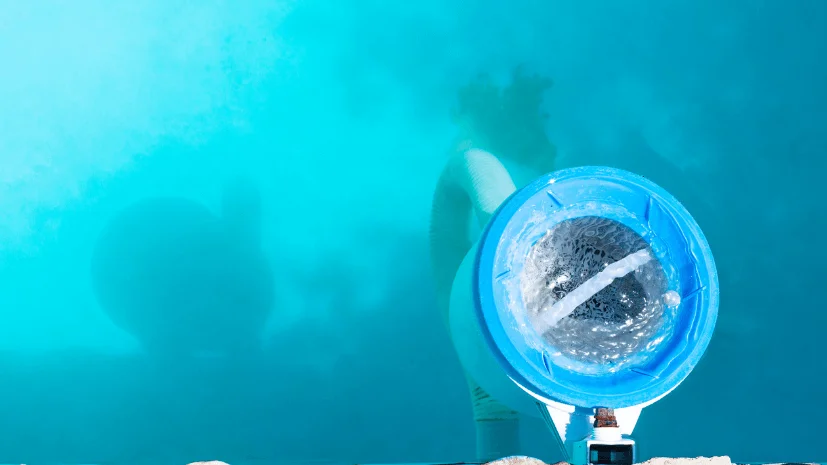
Cartridge filters are a popular pool filter known for their efficiency and ease of maintenance. They utilize a replaceable cartridge as the filtering medium, offering effective filtration while requiring minimal effort to clean and maintain.
The operational process of cartridge filters revolves around the utilization of a replaceable cartridge as the central element in the pool filtration system. Here’s an overview of how cartridge filters work:
1. Filtration Process: Water from the pool is pumped into the filter housing and directed through the cartridge. As the water flows through the cartridge’s porous material, debris and contaminants are trapped on the surface or within the cartridge’s fibers. The clean water then passes through the cartridge and returns to the pool.
2. Surface Filtration: Cartridge filters employ surface filtration, where particles are captured on the surface of the cartridge material. The pleated or layered design of the cartridge increases the surface area, allowing for efficient particle trapping. This filtration mechanism enables cartridge filters to capture a range of debris sizes, including fine particles like dust and pollen.
Features, Performance, Pros, and Cons of Cartridge Filters
1. Filtration Effectiveness: Cartridge filters are known for their effective filtration capabilities. They can capture particles as small as 10-20 microns, resulting in cleaner and clearer pool water. However, they may not be as efficient as diatomaceous earth (DE) filters in removing ultra-fine particles.
2. Flow Rate and Pressure: Cartridge filters typically offer lower flow rates than sand filters. While this can slightly reduce water circulation, it also allows for longer contact time between water and the cartridge, enhancing filtration. The lower pressure operation also reduces strain on the pool pump.
3. Maintenance and Cleaning Frequency: Cartridge filters are relatively easy to maintain. The cartridges can be removed from the housing and cleaned with a hose or soaked in a cleaning solution to remove debris and contaminants. The cleaning frequency depends on factors such as pool usage, water quality, and the manufacturer’s recommendations. Generally, cartridge filters require less frequent cleaning than sand or DE filters.
4. Cost and Lifespan: Cartridge filters often have a higher initial cost than sand filters. However, they can be cost-effective in the long run. Cartridges have a longer lifespan and require fewer replacements than sand or DE media. Additionally, cartridge filters reduce chemical usage, saving on chemical costs.
Pros of Cartridge Filters:
● Effective filtration of particles as small as 10-20 microns.
● Easy maintenance and cleaning process.
● Lower pressure operation, reducing strain on the pool pump.
● Longer lifespan and potential cost savings in the long term.
● Suitable for smaller to medium-sized pools or spas.
Cons of Cartridge Filters:
● Lower flow rates compared to sand filters.
● It may require more frequent cleaning compared to DE filters for optimal performance.
● Potential higher initial cost compared to sand filters.
Selecting the right cartridge filter size and model is essential based on your pool’s size, filtration needs, and water quality. Regular maintenance, including proper cleaning and timely cartridge replacements, is crucial to ensure optimal filtration performance and extend the filter’s lifespan.
Sand Filters: Reliable and Versatile Water Filtration Systems
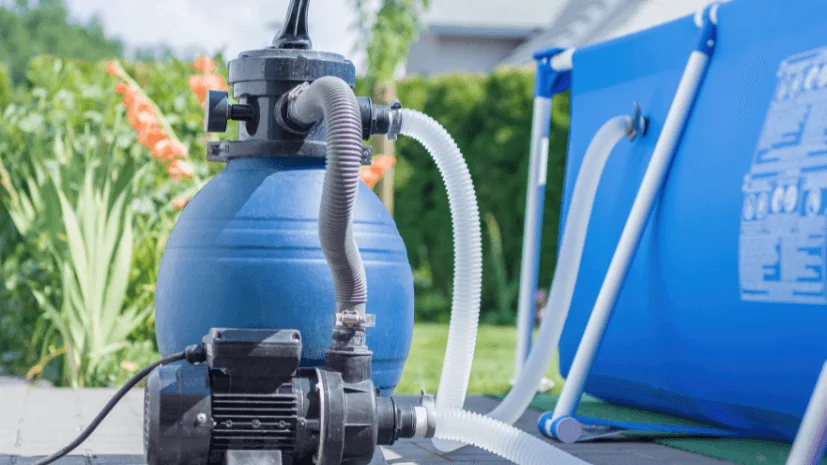
Sand filters are widely used in various industries and applications for their reliability and versatility in water filtration. They employ a bed of specially graded sand as the primary filtration medium, efficiently removing impurities and particles from the water.
Let’s take a closer look at how sand filters works.
1. Filtration Process: The water to be filtered enters the sand filter tank through an inlet pipe, and it is evenly distributed across the top surface of the sand bed. As the water percolates through the sand bed, suspended particles, debris, and impurities are trapped within the gaps between the sand particles.
2. Mechanical and Physical Filtration: Sand filters rely on mechanical and physical filtration mechanisms. Mechanical filtration occurs as particles get trapped within the voids and gaps between the sand particles. Physical filtration happens as suspended particles collide with the sand particles and adhere to their surfaces.
Features of Sand Filters
1. Tank: Sand filters consist of a sturdy tank designed to withstand the pressure exerted during filtration. The tank may be constructed from fiberglass, stainless steel, or polyethylene.
2. Multi-Layered Sand Bed: The sand bed comprises multiple layers of sand with different particle sizes. The finest sand particles are typically placed at the top layer, while the coarsest particles are at the bottom. This layering allows for effective filtration and prevents clogging.
3. Control Valve: A control valve regulates the flow rate and pressure of water passing through the sand filter. It allows for adjustments based on specific filtration requirements.
Performance of Sand Filters
1. Filtration Effectiveness: Sand filters are highly effective in removing suspended solids, sediment, organic matter, and larger particles from water. They provide reliable filtration, resulting in clearer and cleaner water.
2. Flow Rate and Pressure: Sand filters can handle various flow rates and pressures, making them versatile for various applications. The control valve can adjust the flow rate and pressure to meet specific needs.
3. Maintenance and Cleaning Frequency: Sand filters require periodic maintenance to ensure optimal performance. Backwashing is the most common cleaning method, which involves reversing the water flow to flush out accumulated debris from the sand bed. The frequency of backwashing depends on factors such as water quality and usage, typically occurring every few weeks or months.
4. Cost and Lifespan: Sand filters are relatively cost-effective compared to other filtration systems. The lifespan of a sand filter depends on factors such as the quality of sand used, operating conditions, and maintenance practices. With proper care, sand filters can last for several years.
Pros of Sand Filters:
- Excellent Filtration Capability: Sand filters effectively remove many impurities and particles, ensuring cleaner water.
- Versatility: Sand filters can handle different flow rates and pressures, making them suitable for various applications, including pools, wastewater treatment, and industrial processes.
- Cost-Effective: Sand filters have lower initial costs than other filtration systems and generally require less frequent media replacement.
Cons of Sand Filters:
- Limited Filtration for Fine Particles: Sand filters may need to capture very fine particles or dissolved impurities more effectively. Alternative filtration methods may be more suitable for applications requiring high-level filtration of ultra-fine particles.
- Regular Maintenance: Sand filters require periodic backwashing and monitoring to maintain optimal performance. This can involve some effort and time, especially in larger filtration systems.
- Space Requirement: Sand filters typically require more space than other filtration systems, which can be considered in limited or compact settings.
Sand filters offer reliable and versatile water filtration solutions across various industries and applications. With their effective filtration capabilities, wide flow rate range, and cost-effective operation, sand filters remain popular. However, it’s essential to consider specific filtration needs and maintenance requirements to ensure optimal performance and longevity of the sand filter system.
Which Pool Filter Is Best For You, Cartridge or Sand Filter?

Choosing the right pool filter depends on several factors specific to your pool’s needs and preferences. Here are some key considerations to help you decide between a cartridge filter or a sand filter:
1. Determining Your Pool’s Needs
Consider the size of your pool, its usage, and the desired water clarity. Larger pools with higher usage may benefit from the higher flow rates and larger debris-holding capacity of sand filters. Smaller pools or those with lower usage may find cartridge filters more suitable.
2. Water Volume and Usage
The volume of water in your pool is an important consideration. Cartridge filters are generally better suited for smaller to medium-sized pools. In contrast, sand filters are typically used for larger pools due to their higher flow rates and ability to handle larger water volumes.
3. Contaminant Levels and Type
Consider the levels and types of contaminants in your pool water. Cartridge filters effectively remove smaller particles, including dust, pollen, and debris. Sand filters excel in removing larger particles and organic matter. Suppose your pool tends to have a high concentration of fine particles or debris. In that case, a cartridge filter may be more suitable.
4. Desired Water Clarity and Quality
If you prioritize crystal-clear water, both cartridge and sand filters can achieve good results. However, cartridge filters generally provide superior water clarity due to their finer filtration capabilities. Sand filters can maintain satisfactory water clarity but may require more frequent backwashing to ensure optimal performance.
5. Maintenance Preferences and Capabilities
Consider your willingness and ability to perform regular maintenance. Cartridge filters are known for easy maintenance, as they can be easily removed and cleaned. Sand filters require periodic backwashing, which involves more effort but can be automated in some systems. If you prefer minimal maintenance, cartridge filters may be the better option.
6. Budget and Long-Term Expenses
Evaluate your budget for the initial investment and ongoing expenses. Cartridge filters often have a higher upfront cost, but their cartridges last longer before requiring replacement. Sand filters have a lower initial cost but may need more frequent media replacement and additional backwashing costs.
FAQs About Cartridge Filter and Sand Filter
1. What is the difference between a cartridge filter and a sand filter?
The main difference lies in the filtration medium used. Cartridge filters utilize a replaceable cartridge made of pleated or layered material to trap particles. Conversely, sand filters use a graded sand bed to capture impurities. Cartridge filters are known for their fine particle filtration capabilities and easy maintenance. In contrast, sand filters have higher flow rates and larger debris-holding capacity.
2. Which type of filter provides better water clarity?
Both cartridge filters and sand filters can provide good water clarity. However, cartridge filters generally offer superior clarity due to their finer filtration. They can capture particles as small as 10-20 microns. Sand filters effectively remove larger particles and organic matter but may require more frequent backwashing to maintain optimal performance.
3. How often must I clean or replace the cartridge filter?
The frequency of cleaning or replacing the cartridge filter depends on factors such as pool usage, water quality, and the manufacturer’s recommendations. As a general guideline, cartridge filters typically require cleaning every few weeks to months. Replacement intervals vary but can range from 1 to 5 years, depending on the quality of the cartridge and maintenance practices.
4. Can I use a sand filter for a small pool?
While sand filters are commonly used for larger pools but can also be used for small ones, remember that sand filters may have higher flow rates and larger physical dimensions, which may be less suitable for very small pool setups. Consider the specific filtration needs, space availability, and flow rate requirements when selecting a filter for a small pool.
5. Will a cartridge filter work better for removing fine particles?
Yes, cartridge filters are known for their effectiveness in removing fine particles. They have a high surface area and fine filtration media, enabling them to capture particles as small as 10-20 microns. This makes them ideal for removing fine debris, dust, pollen, and other small particles from the water. Sand filters can also capture some fine particles. Still, cartridge filters may be less efficient than they are in this regard.
6. Is a sand filter better than a cartridge filter?
Sand filters are generally better for larger-scale applications, such as swimming pools or industrial settings, where there is a need for high flow rates and efficient removal of larger particles and debris.
7. Which is better: a sand filter or a cartridge pool filter?
Sand filters are typically more suitable for larger pools or high-flow applications, as they can handle larger dirt loads and provide efficient filtration. On the other hand, cartridge filters are often favored for smaller pools or where finer filtration is desired.
Conclusion
In conclusion, understanding pool sand filters vs cartridge filters are crucial in determining the most suitable choice for your pool. Cartridge filters excel in fine particle filtration and easy maintenance and are suitable for smaller to medium-sized pools. On the other hand, sand filters offer higher flow rates and larger debris-holding capacity and are often preferred for larger pools. Consider factors such as pool size, water clarity needs, maintenance preferences, and budget to make an informed decision.
Remember to properly maintain and clean your chosen filter to ensure optimal performance and longevity. Regular maintenance and timely replacements will help keep your pool water clean, clear, and safe for swimming.
Enjoy your clean and sparkling pool!




